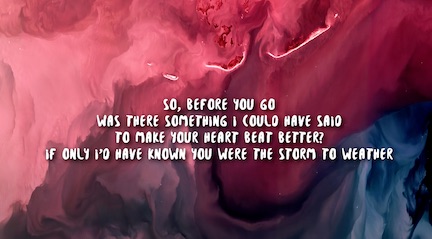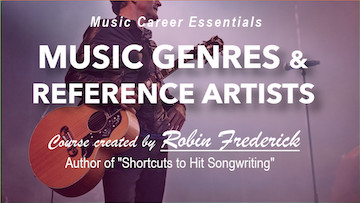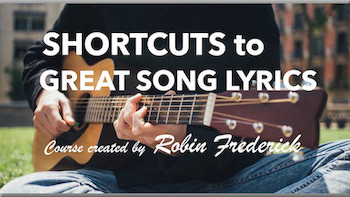Why This song?
For a while now, I’ve been wanting to do a Song Guide on a Lewis Capaldi song. I first heard “Grace” on Grey’s Anatomy and I was struck by its rhythmical melody and simple, powerful hook. Next thing I knew, Capaldi had a radio hit and Grammy nomination for “Someone You Loved,” a piano/vocal song with a lyric that evokes the Titanic of relationship disasters. Capaldi’s current single, “Before You Go,” is well on its way to a billion listens on Spotify. So I start wondering who is this guy?
Well, it turns out, Lewis Capaldi the artist currently consists of himself and a production/songwriting team called TMS (Tommy Barnes, Benjamin Kohn, and Peter Kelleher). You can find out more about their collaboration in this interview.
Their cowrite with Capaldi,”Before You Go,” seems an unlikely hit in these days of unrelenting dance beats. Its dark, confessional Singer-Songwriter lyric and huge, emotional chorus, set it apart from most commercial radio hits. So I want to take a deeper look to find out what makes it work.
Before You Go – Lewis Capaldi
Songwriters: Lewis Capaldi/ Benjamin Kohn/ Peter Kelleher/ Philip Plested/ Tommy Barnes
TECHNIQUES TO HEAR AND TRY:
• Create a robust song structure with contrast in pace.
• Express a difficult emotion in your lyric.
• Use fresh lyric and melody phrasing for a modern sound.
• Study the rhythmical vocal style of today’s hits.
Listen to the song. Read the lyrics.
Watch the lyric video on YouTube.
Read the lyric here.
GENRE/STYLE: (Pop/Singer-Songwriter)
(What is a genre? Watch this video.)
“Before You Go” has the intimate feel of the Singer-Songwriter style in which the singer opens up about his own feelings and situation. (Capaldi has said this lyric is based on a personal experience.) At the same time it has the kind of big, attention-grabbing chorus that works well for Pop radio.
The song charted at No. 1 in the U.S on the Mainstream Top 40 radio chart, went to No.1 on the singles chart in the U.K., and is an international Pop hit.
SONG STRUCTURE
You don’t have to come up with a wildly unique song structure to impress your listeners. “Before You Go” is a great example of a familiar, reliable structure that delivers a powerful punch.
VERSE / PRE-CHORUS / CHORUS
VERSE / PRE-CHORUS / CHORUS
BRIDGE (at 2:33)
CHORUS
VERSE 1: “I fell by the wayside like everyone else…”
VERSE 2: “Was never the right time, whenever you called…”
PRE-CHORUS 1 & 2: “When you hurt under the surface…”
CHORUS: “So, before you go…”
BRIDGE: “Would we be better off by now…”
USE CONTRAST IN PACE: Creating contrast between sections helps your song avoid that monotonous, wandering feeling, the one that spells instant boredom for listeners. Not only does this song change the note range, moving it higher in each section, it also changes the pace of the notes and words which is a seriously cool thing to do.
Here’s what happens. In the verse, the melody and lyric make use of the fast triple feel in the groove by hitting every beat, including the upbeats. Count 1-and-uh, 2-and-uh,3-and-uh, 4-and-uh as Capaldi sings, “I hate you, I hate you, I hate you, but I was just…” or “now that they’re gone, all I hear are the words that I…”
But that rhythm changes in the pre-chorus where the notes stretch out, landing on the downbeats only, creating a different musical feel for the listener. Count the downbeats—1, 2, 3, 4 as he sings “you hurt under the surface’—and notice where the words land.
In the chorus section, the melody uses a change in phrasing to create contrast. The first word (“So…”) holds for five long beats before the phrase continues (“before you….”) and lands on “go,” holding that word for another five beats before continuing. It’s a very different melody pace from either the verse or pre-chorus.
– Try It Now –
Listen to this song and notice the structure. How can you tell when the song moves from verse to pre-chorus to chorus? What’s the most obvious change? Now listen closely to the verse and pre-chorus and notice the difference in the pace of the notes and words. Then listen to the chorus and notice how the pace is different from either of the previous sections.
LYRICS
WRITING ABOUT DIFFICULT EMOTIONS
The emotion at the heart of this song is regret. It’s one of those emotions we will all feel at times and, in my opinion, is one of the most difficult to write about. We feel regret because we can’t go back and change something. How do we write about something we’re not able to do anything about? All we can do is focus on the feeling in the moment and acknowledge it, as the lyric does here:
When you hurt under the surface
Like troubled water running cold
Well, time can heal, but this won’t
The image of hurt “under the surface, like troubled water running cold” delivers both a mental picture of dark, turbulent water and the physical sensation of numbing cold. The associations we have with imagery like this include feelings of loss, helplessness, pain, and confusion. It conveys to the listener what regret feels like and the threat it poses to the singer. Listeners can experience it themselves physically and mentally.
When writing about emotion, you can engage the listener and get them to actually feel what you feel by using the physical sensation of the emotion itself and comparing it to images and actions.
Read more in my blog: Add Emotion to Your Lyrics.
UNTANGLING PRESENT FROM PAST
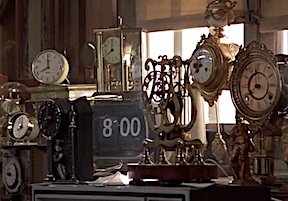
There’s another reason why regret is a challenging emotion to write about. Whatever it is we regret, it’s something that’s in the past. But a song lyric that spends too much time in the past has less impact on listeners than one that’s happening now, in the present. We need to give listeners enough history to understand what the singer feels, but we don’t want to stay there too long.
This lyric solves that problem by suggesting what happened, telling us only what we need to know and never getting very specific about it. The opening two lines of Verse 1 describe what happened back then.
I fell by the wayside like everyone else
I hate you, I hate you, I hate you, but I was just kidding myself
While the next two lines describe what the singer is currently feeling (regret) and doing (thinking about what he should have said).
Our every moment, I start to replace
‘Cause now that they’re gone, all I hear are the words that I needed to say
After that, both the pre-chorus and chorus lyric reflect the singer’s thoughts and feelings in the present moment of the song. When writing a lyric about something that happened to you in the past, fill in only the details the listener will need in order to understand how you feel now.
– Try It Now –
Think of an emotional experience you’ve had in the past. How do you feel about it now? What do you want to say or do about it now? Write a verse and chorus lyric that includes some important information about the past but keeps most lines focused on your current feelings about it.
MELODY
CREATIVE PHRASING
Too often, when we write lyrics on the page, they end up in neat, four-line groups with lines of similar length and a predictable rhythmic feel, like a greeting card poem. While a contemporary melody can handle that type of lyric in a verse, use too much of it and your song will begin to sound stale and uninteresting. The secret to avoiding that trap: Don’t let your lyric dictate the length of your melody lines!
“Before You Go” is filled with smart, creative phrasing. The lyric when written looks one way, but when paired with the melody, it’s broken up or strung together in ways we don’t anticipate.
I’ll show you what I mean. Read the first line of the chorus as if someone is saying it in conversation.
“So, before you go, was there something I could have said to make your heart beat better?”
That is a loooong sentence. But the melody breaks it up into shorter phrases. When this happens, some words land on Beat 1 and become emphasized, adding interest and intention to the line. Listen to the chorus and count along. Notice the pauses and the words that fall on Beat 1 (in bold).
So…before you
Go… was there some
thing I could have said to make your
heart beat better?
Those lines do not look like a greeting card poem. And that long sentence has become more interesting and more emotional.
If your melody and lyric phrases are falling into predictable patterns, try breaking them up in unexpected ways. Be careful, though. When a lyric line is phrased in a way that’s unusual, it can sometimes be hard for listeners to comprehend the meaning. Try using plenty of repetition in your melody (as the writers do in this song). Repeat melody lines while the lyric changes to give listeners only one thing—the lyric—they need to focus on.
– Try It Now –
Write out a lyric of your own as if the singer is simply speaking the lines. Then sing your lyric to an existing hit song melody, breaking up the sentences to fit the melody in any way that works. Make changes to your lyric as needed. It’ll take some work to get it to fit but it’s a great exercise that will help you think differently about the relationship of lyrics to melody.
CHORDS
“Before you Go” is a four-chord song in which the order of the chords changes from one section to the next, unlike many Dance and Pop hits that cycle through the same four-chord progression throughout the entire song.
The chords are basic songwriter chords and easy to play.
You’ll find the chords and lyrics here.
-Try It Now –
Learn to sing this song (play along or sing to a karaoke track) to embed the melody and lyric style. Write a few lyric lines of your own to the melody to see how they sound and get a feel for the style.
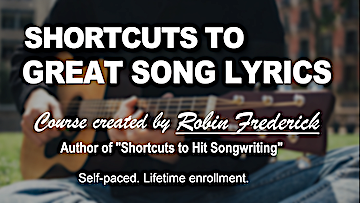

PRODUCTION
DYNAMICS
If you want to create the biggest possible dynamic build in a production, the the best place to start is as small as possible.
In this track, the intro is just a couple of guitar notes and then a first verse with fingerpicked guitar and bass creating the rhythm feel.
The pre-chorus adds some pad sounds way in the background then the track opens up into a big chorus with low drums and strings. The fingerpicked guitar keeps the rhythm going throughout, while moving to a higher note range in the chorus that picks up the intensity. It’s not always adding instruments that builds a track, but what and where they’re playing.
In Verse 2, the low drums play a fast four-on-the floor, building energy and supporting the guitar and bass. This time when we get to the chorus, a strummed guitar mimics the rhythm of the finger picking. Adding instruments that support others by paralleling some portion of what they’re playing is an excellent way to build dynamics while avoiding “cluttered track” syndrome.
-Try It Now –
If you have a track with a messy, unfocused instrumental arrangement, decide which instruments are the focus of your track and use the rest in supporting roles, doubling parts, paralleling them in other ways, or playing a supporting rhythm.
VOCAL in BEFORE YOU GO
It’s impossible to overstate the contribution that Capaldi’s vocal performance makes to the enormous success of this song. He has the ability to deliver an emotionally powerful lyric with absolute authenticity and rhythmical precision.
In fact, it’s possible to think of his vocal as part of the rhythm track at times. It’s one of the things that gives this song its current sound and a lot its radio appeal.

With the rise in importance of rhythm in Pop songs and the tightly locked-in vocals demanded by producers like Max Martin, the ability of a singer to deliver a vocal that is rhythmically tied to the underlying beat of a song has become a must-have skill for Pop singers. Lewis Capaldi is capable of delivering a vocal that’s part drum machine and achingly human at the same time, driving this track up the Pop charts.
-Try It Now –
If you’re a singer interested in contemporary rhythmical styles take some time to study successful singers. Sing along with them paying special attention to the rhythm of their phrasing and the way they attack and release each note.
Go back and listen to this song. Feel it. Enjoy it. Then go back and listen like a songwriter. Feel it. Ask yourself why.

